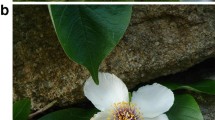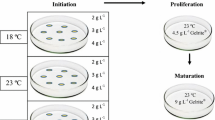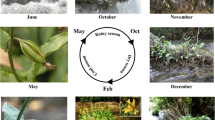Abstract
This study outlines the first method for initiating micropropagation of a wide range of wild and commercially significant species of various Southern Hemisphere rushes (Restionaceae) by embryo culture. Most species showed best embryo growth on half-strength Murashige and Skoog basal medium, with the addition of gibberellic acid (1–5 μM) and/or zeatin (1–5 μM). Results showed there was a high level of variability in seed germinability as indicated by in vitro embryo growth (6–96%), with no apparent link to growth form, generic status or habitat preference. Embryo growth was achieved for several rare and/or restricted taxa (Loxocarya ‘magna’ ined Lepidobolus contorta Meney & Dixon Hopkinsia anoectocolea (F. Muell.) Cutler, Lepidobolus contorta Meney & Dixon ined). The low germination of whole seeds of most species (average of 10%) indicates that whole seed germination under controlled conditions considerably understates the potential germinability of species of Restionaceae. In this context, embryo culture is useful for assessment of germinability and for initiating stock cultures for micropropagation.
Similar content being viewed by others
Abbreviations
- 1/2MS:
-
half-strength (minerals only) Murashige and Skoog (1962) basal medium
- GA3 :
-
gibberellic acid
References
Bell TL & Pate JS (1993) Morphotypic differentiation in the SW Australian Restiad Lyginia barbata R. Br. (Restionaceae). Aust. J. Bot. 41: 91–104
Meney KA (1993) Functional aspects of the growth, development and reproduction of Southern Hemisphere rushes (Restionaceae). Unpublished PhD. thesis, Botany Dept, University of Western Australia
Meney KA & Dixon KW (1988) Phenology, reproductive biology and seed development in four rush and sedge species from Western Australia. Aust. J. Bot. 36: 711–726
Meney KA, Dixon KW, Pate JS & Dixon IR (1990) Rehabilitation of mining affected flora. Report to the Minerals and Energy Research Institute, W. Australia (p. 87) Kings Park and Botanic Gardens, Perth
Murashige T & Skoog F (1962) A revised medium for rapid growth and bioassays with tobacco tissue cultures. Physiol. Plant 15: 473–497
Pate JS Meney KA & Dixon KW (1991) Contrasting growth and morphological characteristics of fire-sensitive (obligate seeder) and fire-resistant (resprouter) species of Restionaceae (S. Hemisphere restiads) from S.W. Western Australia. Aust. J. Bot. 39: 505–525
Radford AE, Dickison WC, Massey JR & Ritchie Bell C (1974) Vascular Plant Systematics. Harper and Row, New York
Author information
Authors and Affiliations
Rights and permissions
About this article
Cite this article
Meney, K.A., Dixon, K.W. In vitro propagation of Western Australian Rushes (Restionaceae and related families) by embryo culture. Part 1. In vitro embryo growth. Plant Cell Tiss Organ Cult 41, 107–113 (1995). https://doi.org/10.1007/BF00051579
Received:
Accepted:
Issue Date:
DOI: https://doi.org/10.1007/BF00051579




